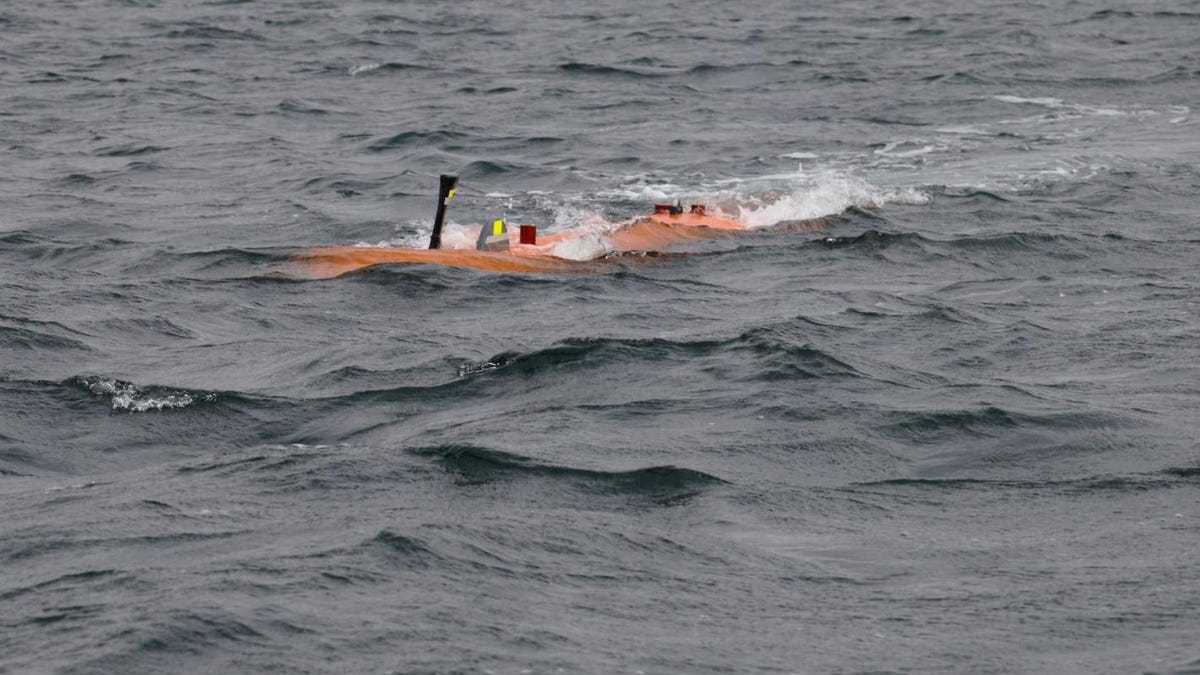Folks, we’ve got another missing submersible on our hands, but don’t worry. There aren’t any billionaires on board. In fact, no one is onboard the sub that was exploring underneath the “Doomsday Glacier” in Antarctica. You’d think we’d stay away from things with “doomsday” in the name, but that’s just human nature I guess.
In a press release posted on Sci Tech Daily, Sweden’s University of Gothenburg said its robotic submersible, called “Ran” after the Norse goddess of the sea, went missing during its second voyage beneath Thwaite’s Glacier – a.k.a the Doomsday Glacier – in Antarctica over the weekend. It got that name because scientists fear that if it melts entirely, it could cause the sea to rise to a devastating level. Not great!
Ran is a 23-foot-long exploration vehicle that’s fitted with all sorts of modern technology and sensors that can measure and document its surroundings in the water, according to the release. It has the capacity to carry out long missions under ice, and it has been successfully used in Antarctica as well as other places. Well, until now.
“This was the second time we took Ran to Thwaites Glacier to document the area under the ice. Thanks to Ran, we became the first researchers in the world to enter Thwaites in 2019, and during the current expedition we have visited the same area again,” Anna Wåhlin, the project’s lead, said. “Even if you see melting and movements in the ice from satellite data, from Ran we get close-ups of the underside of the ice and information about exactly which mechanisms are behind the melting.
Here’s how the whole “it went missing” thing happened, according to the release in Sci Tech Daily:
During her dives under the 200–500 m thick ice, Ran does not have continuous contact with the research vessel. The route is programmed in advance and thanks to its advanced navigation system, Ran can find her way back to open water. What it looks like under a glacier is often completely unknown. A mission under a glacier is therefore built up in several stages, which starts near the bottom and outside the ice to gradually build up the difficulty and finally go really close to the ice and perform measurements in the interface layer between ice and water.
During January of this year, Ran completed several successful dives under Thwaites, but during the last planned dive of the expedition, something went wrong. After a long journey under the ice, the AUV did not appear at the programmed rendezvous point. RV/IB Araon aborted the homeward journey and searches were conducted with acoustic search equipment, helicopters, and drones, without success. In the end it was just a matter of realizing that Ran had been lost.
Now, a recovery effort is underway to find the wayward vessel, according to the release:
“It’s a bit like looking for a needle in a haystack, but without even knowing where the haystack is. At this point, Ran’s batteries are dead. All we know is that something unexpected happened under the ice. We suspect it ran into trouble, and then something prevented it from getting out,” says Anna Wåhlin.
In a similar situation to the Titan submersible that went missing while looking at the wreck of the Titanic, Ran’s chances of being found get more remote the longer it is lost. Looking to the future, Wåhlin says the group will be looking for a financier to help replace Ran. Godspeed, little friend.

